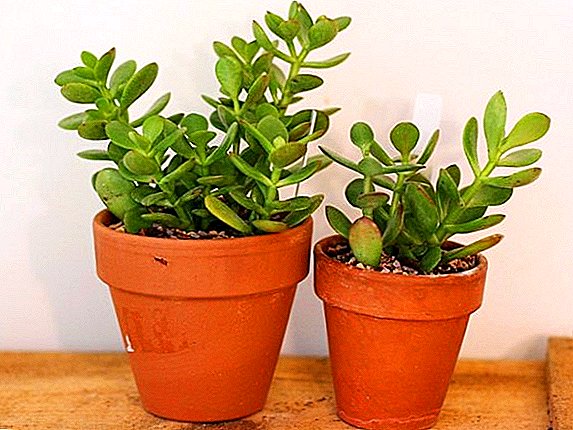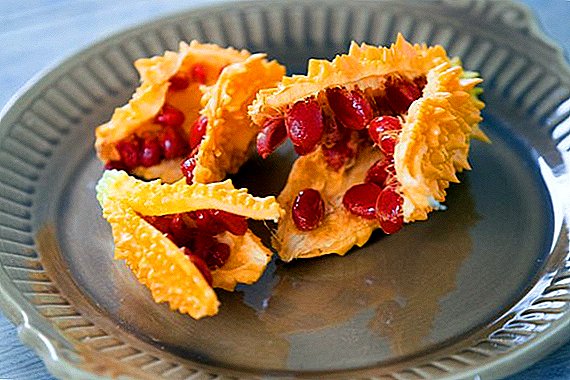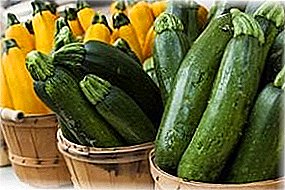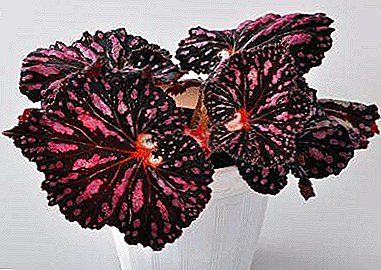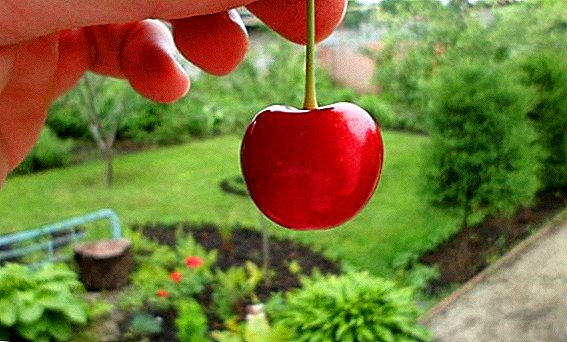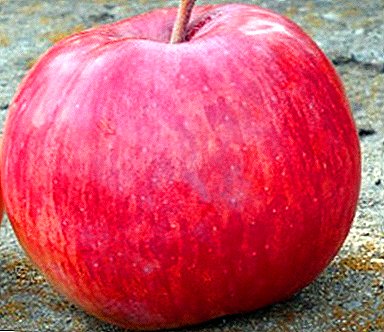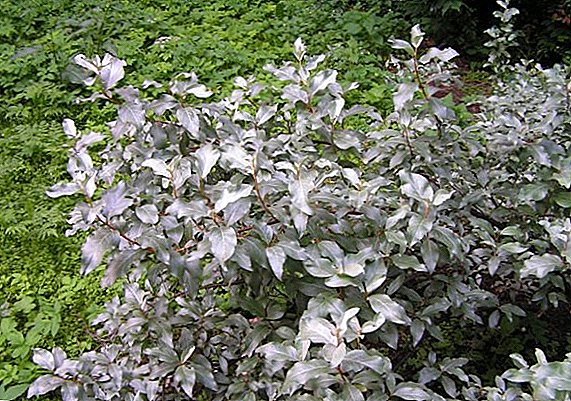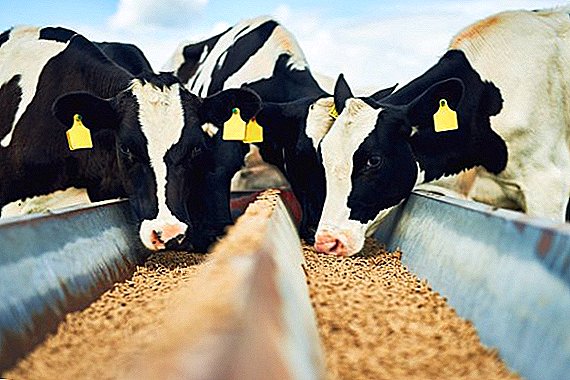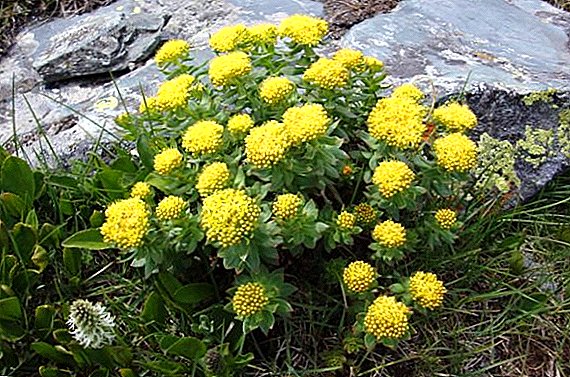 Golden Root or Rhodiola Rosea is a popular medicinal plant that is collected in very large volumes due to its beneficial properties. This attitude led to the fact that the plant began to meet less and less and was listed in the "Red Book". This situation has led many herbalists to grow this plant in their own beds. And in this article we will take a look at the photo and description, as well as the features of growing Rhodiola rosea.
Golden Root or Rhodiola Rosea is a popular medicinal plant that is collected in very large volumes due to its beneficial properties. This attitude led to the fact that the plant began to meet less and less and was listed in the "Red Book". This situation has led many herbalists to grow this plant in their own beds. And in this article we will take a look at the photo and description, as well as the features of growing Rhodiola rosea.
Botanical description
Rhodiola rosea is a perennial herbaceous plant, has a thick and straight root system with fleshy roots, which, if broken, start to smell like rose. Thanks to this, Rhodiola acquired its name.  The aerial part in height does not exceed 50 cm. The leaves are rather dense, resemble an ellipse in shape, have cloves on the tops. The flowers are small, yellow, collected in such a way that they form thyroid inflorescences. Flowering falls on the end of June - early July. The fruits have a reddish or greenish tinge, and they ripen closer to August.
The aerial part in height does not exceed 50 cm. The leaves are rather dense, resemble an ellipse in shape, have cloves on the tops. The flowers are small, yellow, collected in such a way that they form thyroid inflorescences. Flowering falls on the end of June - early July. The fruits have a reddish or greenish tinge, and they ripen closer to August.
In nature, it is found near mountain streams, because it needs a lot of water.
Varieties and varieties
Today, botanist scientists have confirmed the existence of about 90 species of Rhodiola, but we consider the most popular species that can be found in gardeners most often:
- Kirillov - in the wild it can be found in the mountainous regions of Asia. The height of the bush reaches half a meter, its root system is tuberous, begins to bloom in mid-May, the leaves are pointed.

- Linear - has upright leaves and stem, which do not exceed 30 cm in height.

- Raznozubchataya - Like most species, in the wild it can be found in the mountains of Asia. The root system is shallow: most often the tubers rise almost to the surface. The leaves of this variety are pale green with a bluish tinge, and in shape resemble an egg.

- Golden root - With the description of this variety, we have already met above.
Choosing a landing site
Golden root is quite unpretentious: its cultivation and care can be done at different sites, but in order for Rhodiola Rosa to feel more comfortable and grow better, you need to follow some recommendations. 
Important! The place where Rhodiola will grow should be protected from drafts, otherwise there is a greater likelihood of diseases.
Lighting
Plant for lighting is undemanding: it can be planted both on a well-lit area, and on the shade. The only difference is that on an open area on dry days, Rhodiola needs more frequent and abundant watering, as it is very moisture-loving even without drought.
The soil
Ideally, the ground should be sandy or loamy with the addition of organic fertilizers. Before spring or autumn planting of a flower in an open ground, the plot must be prepared from the end of summer or autumn. To do this, first do a deep digging (to a depth of about 30-40 cm), then fertilize and re-dig. Dry manure with the calculation of 2 buckets per 1 square meter is used as a fertilizer. m or the same amount of compost.  If the soil in the area is acidic, it needs to be propelled at the rate of 500 g of lime per 1 square meter. m. Before planting, if necessary, drainage is laid on the bottom, which consists of brick chips and river sand (in the absence of river, the usual one will do), the drainage layer should be about 10-15 cm. After that, the drainage should be filled with fertile earth.
If the soil in the area is acidic, it needs to be propelled at the rate of 500 g of lime per 1 square meter. m. Before planting, if necessary, drainage is laid on the bottom, which consists of brick chips and river sand (in the absence of river, the usual one will do), the drainage layer should be about 10-15 cm. After that, the drainage should be filled with fertile earth.
Important! If the soil is sandy, then add drainage is strictly prohibited - this leads to the fact that the plant loses moisture.
Rhodiola Rose Planting
Planting such a perennial is carried out in two ways: sowing seeds and by dividing the roots. Rhodiola rosea, or golden root, requires attentive care and preparation so that reproduction is more successful.  In order to obtain not only the roots, but also the seed, reproduction is best carried out through the sowing of seeds. In this case, you will grow male and female bushes, which will give new seeds in a couple of years. The very same landing can be carried out in the fall and spring. Autumn planting is carried out in November and in open ground. Before this, the top layer of the ground is leveled on the pre-prepared area, and then the seeds are poured into the soil at a distance of 15 cm from each other, slightly pressed and covered with earth, and then covered with a film or other material until spring.
In order to obtain not only the roots, but also the seed, reproduction is best carried out through the sowing of seeds. In this case, you will grow male and female bushes, which will give new seeds in a couple of years. The very same landing can be carried out in the fall and spring. Autumn planting is carried out in November and in open ground. Before this, the top layer of the ground is leveled on the pre-prepared area, and then the seeds are poured into the soil at a distance of 15 cm from each other, slightly pressed and covered with earth, and then covered with a film or other material until spring.
Before sowing the seeds in the spring, they should be hardened, in other words, stratified. To do this, at the end of January, the seeds need to be soaked for 24 hours in a growth stimulator, then wrapped in wet gauze and put in a refrigerator for 30-45 days, where the temperature should not exceed + 4 ° C. 
Important! Throughout the stratification, you need to make sure that the gauze is always wet.In March, after stratification, the seeds are sown in a box, lightly sprinkled with earth, covered with a glass plate or film and left in a box in a room with a temperature of about 24 ° C, after emergence of shoots cover is removed.
To plant seedlings in open ground should be in June, when it gets stronger a little.
Familiarize yourself with the rules for growing seedlings of Turkish carnation, statice, fragrant tobacco, chrysanthemum, left hook, mimulyus, obriety.
 Planted seedlings should be at a distance of 20 cm from each other. If you plant several rows, the distance between the rows should be about 50 cm. Place for young plants should be shaded to avoid sunburn, which can be detrimental to Rhodiola.
Planted seedlings should be at a distance of 20 cm from each other. If you plant several rows, the distance between the rows should be about 50 cm. Place for young plants should be shaded to avoid sunburn, which can be detrimental to Rhodiola.  The most popular and fastest method of reproduction is division of the roots. Roots for landing need to be bought in the fall. If you have your own plant, the division is carried out after the entire above-ground part of the bush dries out. It is necessary to divide the roots in such a way that each part has several buds. The cuts should be treated with a powder of wood or activated carbon, after which the roots should be left for a while and let them dry out a little. When the roots begin to wither, they can already be planted in the ground to a depth of about 10 cm. The distance between the bushes is the same as when planting seedlings.
The most popular and fastest method of reproduction is division of the roots. Roots for landing need to be bought in the fall. If you have your own plant, the division is carried out after the entire above-ground part of the bush dries out. It is necessary to divide the roots in such a way that each part has several buds. The cuts should be treated with a powder of wood or activated carbon, after which the roots should be left for a while and let them dry out a little. When the roots begin to wither, they can already be planted in the ground to a depth of about 10 cm. The distance between the bushes is the same as when planting seedlings. 
Did you know? In the wild, seedlings produce new seeds, on average, after 20 years.
Features plant care
Young seedlings of golden root are growing very slowly, and you can replant them to a permanent place no earlier than a year after planting and germination. During this period, the bush needs care - frequent loosening between the rows and careful weeding, Rhodiola Rose should be watered as the ground dries.
It is possible to start top dressing of rhodiola rosea when the leaves of the seedling are at least 6 cm long. Slurry is best for this, which is diluted with water in the proportions of 1 liter of liquid to 4 liters of water. Fertilizers are applied to the wet soil between the rows.  For wintering, seedlings are mulched with peat or humus: a layer of mulch is about 5 cm. When the bush grows up, care for it will be weeding and good watering during a drought.
For wintering, seedlings are mulched with peat or humus: a layer of mulch is about 5 cm. When the bush grows up, care for it will be weeding and good watering during a drought.
Diseases and pests
This perennial is subjected to attacks of diseases and pests extremely rare. The most common disease is the black leg, and this is only possible in young bushes up to 3 years old. In very rare cases, when the plant is weakened, it can catch powdery mildew.
As for parasites, it can be attacked by banana and sedum weevils. Badanov can get to you along with the root: most often these beetles are brought to nurseries along with bushes that grew in a wild environment. This parasite affects primarily the root system. Therefore, buying a new Rhodiola, carefully examine the roots for the presence of a pest.  If you find insects some time after the purchase, then immerse the roots in a salt or manganese solution for 10-15 minutes.
If you find insects some time after the purchase, then immerse the roots in a salt or manganese solution for 10-15 minutes.
Sedumny weevil attacks the aboveground part of the plant. Adult bugs gnaw through small holes in the leaves, causing them to turn yellow. The larvae of the parasite can also strike the stalk itself, making many moves in it. To get rid of such a pest, it is best to shake it with hands on some bright and sticky surface, and then just crush it. The use of pesticides is not recommended.
Few of the beneficial properties
Golden root has many useful properties for humans:
- It helps to improve the work of the heart
- stops bleeding;
- restores power after overwork;
- normalizes metabolic processes;
- stimulates the brain;
- strengthens blood vessels and capillaries;
- contributes to the normalization of blood sugar in people with diabetes;
- acts as a sedative;
- contributes to the rapid adaptation of man to new climatic conditions;
- improves appetite;
- improves the activity of the thyroid gland;
- in men it improves the potency, and in women it normalizes the cycle;
- used to treat neurosis.
 But, like most medicinal plants, the golden root has also contraindications:
But, like most medicinal plants, the golden root has also contraindications:- it is forbidden to take it in case of hypertension and hypertensive crisis;
- can not be taken with fever;
- not recommended to take any drugs from the root of pregnant and lactating, as well as children under the age of 12 years;
- Because of the stimulation of the brain can not take drugs for a few hours before bedtime.
Did you know? The leaves of Rhodiola Rosea are often taken for food: salads, compotes and other dishes are made from them.Rhodiola rosea, or golden root - a very useful plant. Planting and caring for which in the open field does not require large expenditures and efforts. Growing in such a plant, you will get not only a beautiful flower, but a useful medicine for many diseases and ailments.


